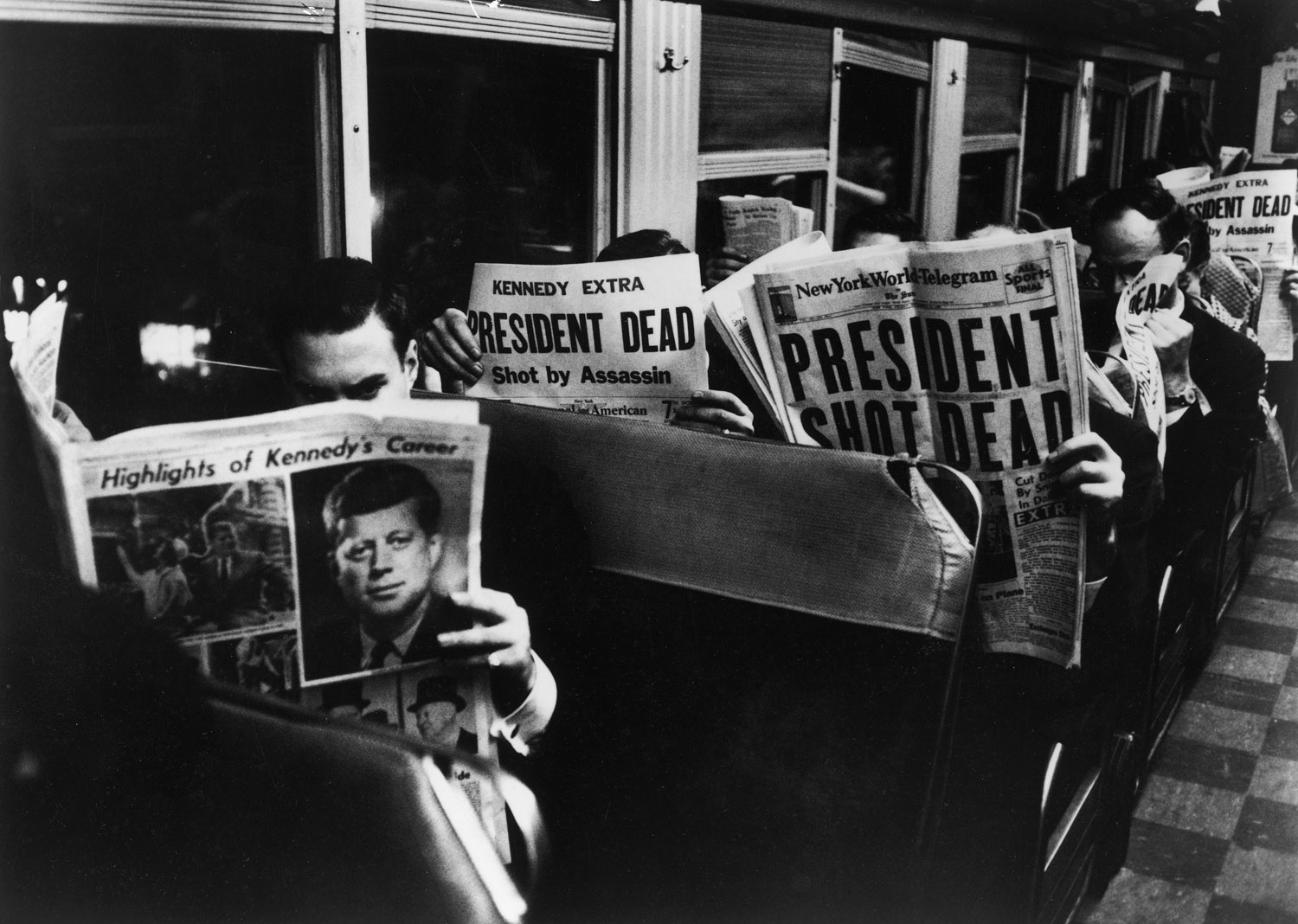
It’s difficult to say exactly what makes this celebrated Carl Mydans photograph of commuters on the day of John Kennedy’s assassination so compelling. Maybe it’s simply that, technically, it’s a wonderful picture. There is depth here, and tension — a kind of captive energy — that holds the viewer’s eye while urging it to delve further into the scene.
There is, of course, the simple fact that the photo is eloquent about our shared history. This is what it looked like, the picture tells us, on one train car in one major American city, on the afternoon of one of the most significant dates of the 20th century: November 22, 1963.
But on another level entirely, Mydans’s photograph is memorable and resonant because every single figure in the frame — and probably every person on the train that afternoon who could read — has his or her nose buried in a newspaper. Here, as clearly and as powerfully as one could wish, is a graphic illustration of the old adage that journalism is “the first rough draft of history.”
The truth of that adage would be just as evident if this photograph was made on, say, April 15, 2013, shortly after the Boston Marathon terror attack. Undoubtedly everyone in that photo would be staring at a smart phone or tablet, looking for the latest, most accurate, most reliable information about an unthinkable event. But the impulse would be the same as in 1963: Tell me what happened. Show me what it looked like.
Finally, the photograph acts as a kind of de facto eulogy for a time when readers in most American cities, big and small, had a slew of morning and afternoon newspapers to choose from. In New York alone, commuters could pick up the Journal-American, the World-Telegram, the Daily News, the Post, the Times, the Mirror, the Herald Tribune — and those were just the dailies!
There’s little doubt that much of the world’s population today has an infinitely broader range of choices when it comes to how, when and through which “brands” they’ll encounter the news than anyone enjoyed five decades ago. It’s unlikely, however, that the jolt we get today from urgent, breaking news is any more intense, or feels any more timely, than that experienced by each and every one of the commuters in Mydans’s great photo.
— Ben Cosgrove is the Editor of LIFE.com
[Buy the LIFE book, The Day Kennedy Died]
[See photos from JFK and Jackie’s 1953 wedding]
[See photos from JFK’s funeral at Arlington]

More Must-Reads from TIME
- Donald Trump Is TIME's 2024 Person of the Year
- Why We Chose Trump as Person of the Year
- Is Intermittent Fasting Good or Bad for You?
- The 100 Must-Read Books of 2024
- The 20 Best Christmas TV Episodes
- Column: If Optimism Feels Ridiculous Now, Try Hope
- The Future of Climate Action Is Trade Policy
- Merle Bombardieri Is Helping People Make the Baby Decision
Contact us at letters@time.com